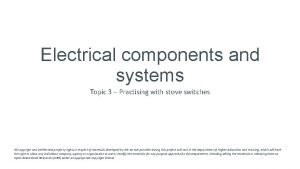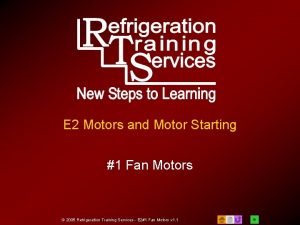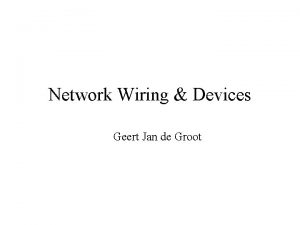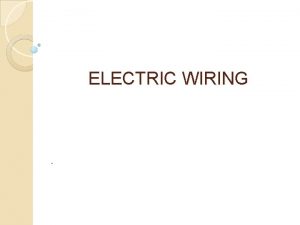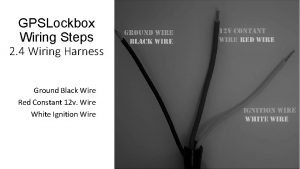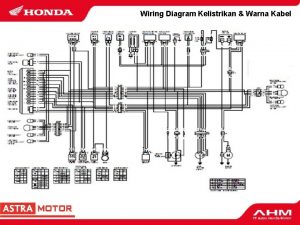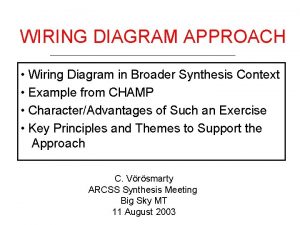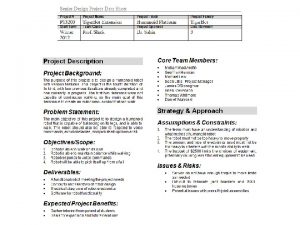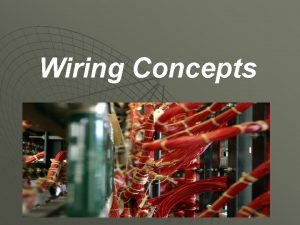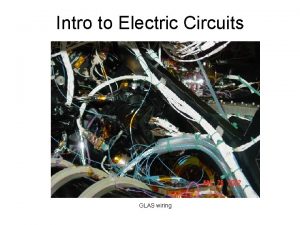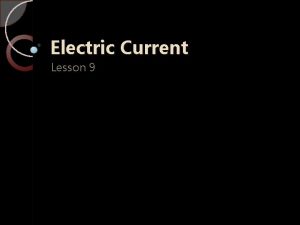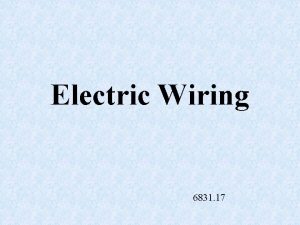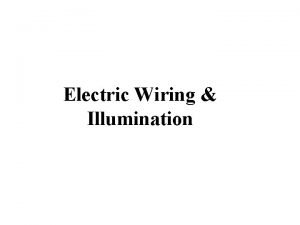HOME ELECTRIC WIRING Lesson 13 HOME ELECTRIC WIRING

















- Slides: 17

HOME ELECTRIC WIRING Lesson 13

HOME ELECTRIC WIRING Most Homes in Ontario are connected to a Power Transmission Grid. The grid is a huge circuit. It covers hundreds of kilometres. The grid connects each building to a power source. The power station is the source of electric energy.

Electric wires carry current to each building through a central electric panel. A number of separate circuits carry current from the central electric panel to different parts of the home. The arrangement of circuits in a building is often called the wiring.

Each circuit in the house is designed to handle a certain number of loads safely. Special circuits may also be designed for certain kinds of loads. Only qualified electricians should ever try to change wiring in a home.

Question: Think about the series and parallel circuits you have built What will happen in your home if you connect too many electrical devices in parallel in the same circuit? The circuit breaker will cut off power to avoid the chance of a fire.

KNOW YOUR VOLTAGE In North America, most household electric circuits carry 120 V. However, different electrical devices operate at different voltages 120 V A regular household electric current is connected to a 120 V circuit Some household outlets are connected to a 240 V circuit.

It is very important to make sure each device is plugged in at its correct voltage. If the voltage is too low, the device will not work. If the voltage is too high, the device will be damaged. The circuit inside the device may even explode. This can hurt people or start a fire.

Some Large appliances work at 240 V. Electric stoves, freezers, and clothes dryers are examples of appliances that may need 240 V. These appliances have special outlets. A regular electric plug will not fit into a 240 V outlet.

Many devices operate at less than 120 V. A device that operates at 12 V cannot be plugged directly into a regular 120 V outlet. Instead, the plug carries current through a transformer. The transformer reduces the voltage to 12 V.

QUESTION When will an electric device require a transformer? When the voltage is too high Why are 240 V outlets shaped differently from 120 V outlets? To prevent 120 v appliances from being damaged

KNOW YOUR CURRENT Every electrical device needs a certain amount of electric current. Different kinds of devices use, or draw, different amounts of current. Appliances that convert electricity to heat usually draw more current than other kinds of appliances.

Remember, when loads are added in parallel, the total current in the circuit increases. The same thing happens when you connect more devices to an electric circuit by adding up the current draw by each device.

Example: An electric kettle draws about 8 A. A clock radio draws about 1 A. If you connect both of these appliances in one parallel circuit, the total current in the circuit is 8 A + 1 A = 9 A. Kettle 8 A Clock radio 1 A

An electrician planning a home electric system must think about what kinds of appliances will be used in the home. The electrician must also think about where these appliances will be used. Each circuit must be designed to carry the right amount of current for its intended use.

What is the total current in this circuit? 3 A 3 A + 3 A = 12 A 3 A 3 A 3 A

DRAW A CIRCUIT FOR EACH SITUATION. Draw an A. C. power source with one 3 A bulb in parallel with one 6 A bulb. What is the total current draw in the circuit?

DRAW A CIRCUIT FOR EACH SITUATION. Draw an A. C. power source with one 3 A bulb in parallel with one 4 A bulb and one 5 A bulb. What is the total current draw in the circuit?
 Chapter 21 wiring diagrams and wiring repairs
Chapter 21 wiring diagrams and wiring repairs Electric charges and electric forces lesson outline
Electric charges and electric forces lesson outline 3 heat switch wiring diagram
3 heat switch wiring diagram Dts fencing
Dts fencing Electric fence diagram
Electric fence diagram Shaded pole motor wiring diagram
Shaded pole motor wiring diagram Lesson 7 introduction to wiring devices
Lesson 7 introduction to wiring devices Lesson 7 introduction to wiring devices
Lesson 7 introduction to wiring devices Electrical potential formula
Electrical potential formula Joules per coulumb
Joules per coulumb Potential energy of an electric field
Potential energy of an electric field Electric field from electric potential
Electric field from electric potential A suitable electric pump in an electric circuit is a
A suitable electric pump in an electric circuit is a Chapter 21 electric charge and electric field
Chapter 21 electric charge and electric field Chapter 21 electric charge and electric field
Chapter 21 electric charge and electric field Coloumb units
Coloumb units Dc o/d per item charge
Dc o/d per item charge Home care
Home care


